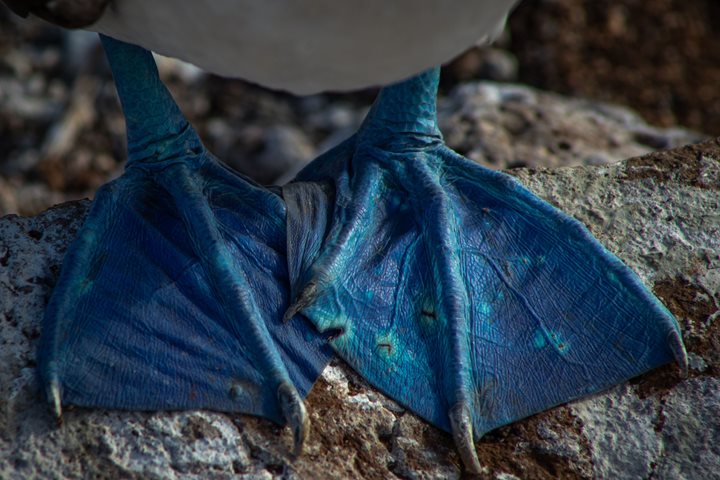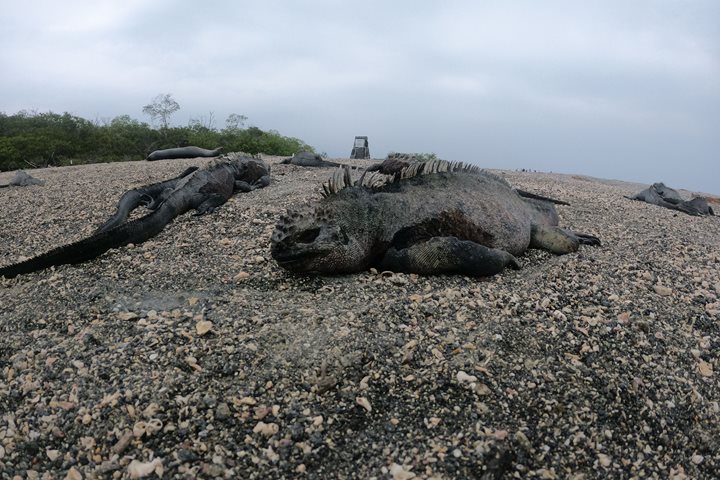After spending a few days on the old Islands of this archipelago, this morning we finally awoke on the youngest formation of Galapagos.
At first glimpse it was very obvious to see that this part of the Archipelago must have active Volcanos. So, with our early risers we went out on the outer decks to enjoy the beauty of the highest Volcano on Isabela Island, known as Wolf Volcano. This Island has five main shield volcanos and all of them are active.
This Volcano is about five thousand feet tall and a few year ago on this Volcano a new species of iguana was discovered. This Iguana lacks pigmentation on their scales which is the reason this iguana is known as the pink iguana. A lot of research is underway to have a better understanding of their life cycle, which is very important in order to take action to protect them.
Soon after visiting Wolf Volcano, we visited another shield Volcano, Darwin Volcano. The ecological condition of each one of them is very different from one another. The fact that each volcano has its own population of giant tortoises is quite remarkable and this is a good example that this Archipelago was colonized by pioneer species. Once they arrived they spread all over and due to different geological events, they became isolated and became new species. In this oceanic archipelago there are many examples of this phenomenon, known as adaptive radiation.
As we continued our navigation towards Punta Vicente Roca we had a nice view of Fernandina Island, which is the youngest Volcano.
As soon as we dropped anchor we went out for a Zodiac ride to look for penguins, cormorants, sea turtles, marine iguanas, boobies, pelicans, sea lions and a very odd looking fish known as the Pacific Ocean sun fish. We were very successful because we saw all of them by Zodiac and snorkeling.
We spent the afternoon exploring Fernandina Island and it was very astonishing to see the whole Island very barren because of the volcanic activity and very young lava flows. The colonization is in the early phase of pioneer plants and animals.
This visitors site has one of the densest populations of marine iguanas in Galapagos and it was very interesting to see female marine iguanas nesting, and male Flightless cormorants bringing building material for females. That is what we call team work.
The light and the weather blessed us the whole day in paradise.







